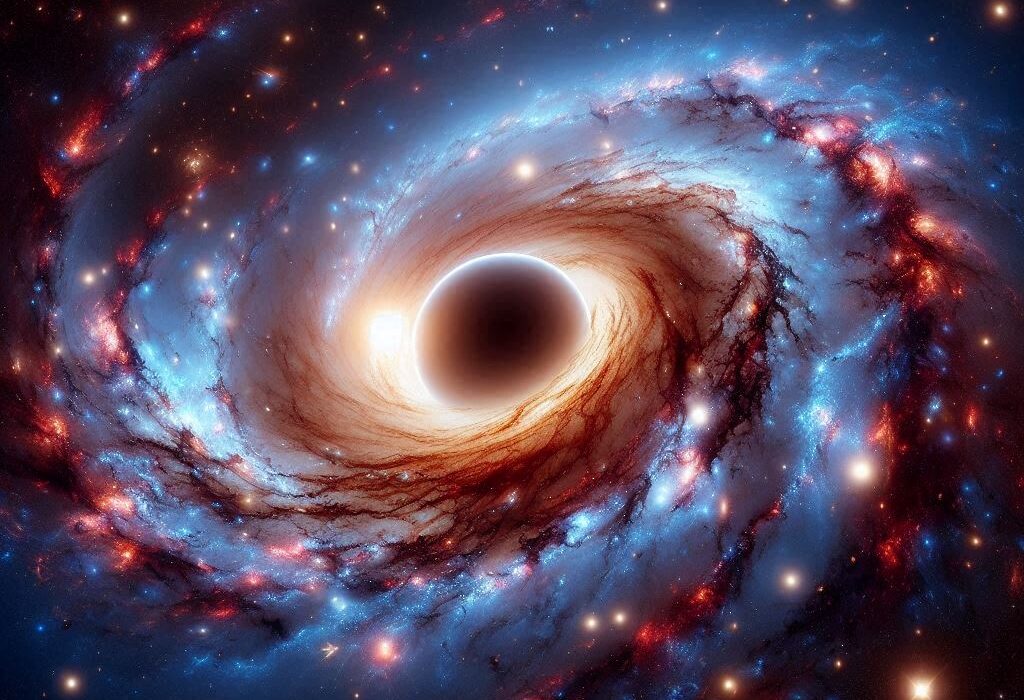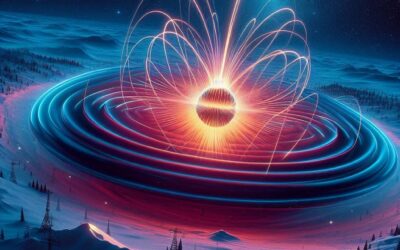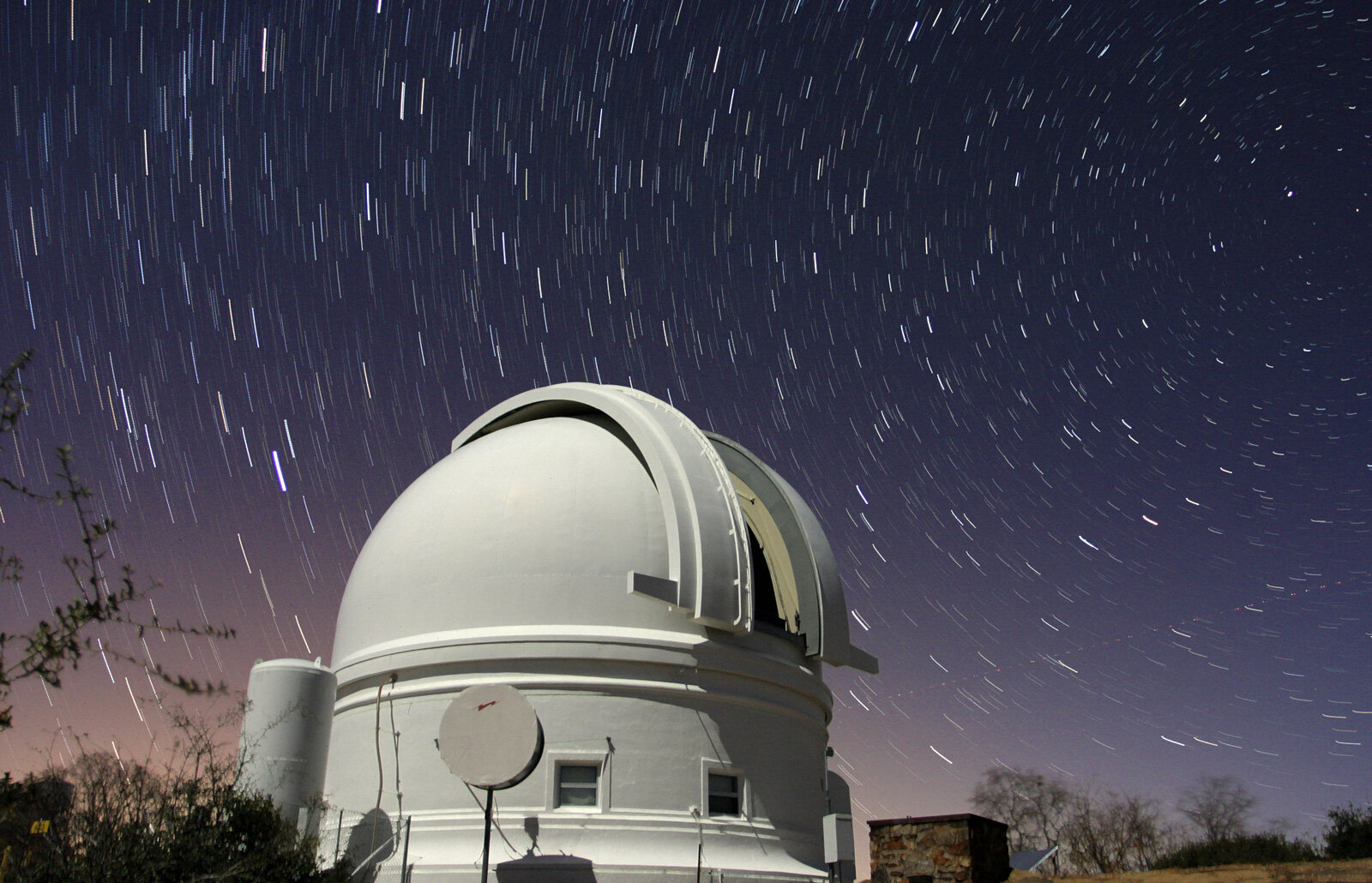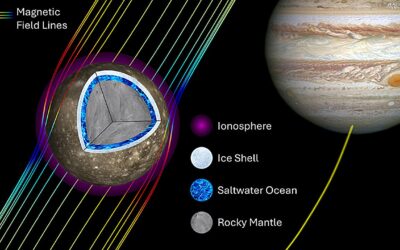An international team of astronomers and physicists has made a groundbreaking discovery concerning the mysterious role of dark matter in the early universe, specifically its relationship with supermassive black holes. In a study published in The Astrophysical Journal, researchers uncovered evidence suggesting that dark matter was a dominant presence in the halos of two supermassive black holes located in galaxies that are about 13 billion light years away from Earth. These findings are significant as they provide valuable insight into the formation of galaxies and their supermassive black holes during a time when the universe was still in its infancy, and they could reshape our understanding of galaxy evolution.
The origin of dark matter as a concept dates back to the 1970s, when American astronomer Vera Rubin made a pivotal observation that would revolutionize the field of astrophysics. Rubin, while studying the rotation of galaxies, noticed that the outer edges of these galaxies were rotating at speeds much higher than would be expected based on the visible matter in those galaxies. This anomaly formed what became known as a flat rotation curve, where the stars and gas far from the galaxy’s center did not slow down, but rather moved at a higher velocity. According to Newton’s laws, which govern the motion of celestial bodies, the outskirts of a galaxy should move slower compared to the regions closer to its center. However, Rubin’s data suggested something unseen, a mass that was invisible to telescopes but was exerting gravitational influence. This invisible mass was later identified as dark matter.
Dark matter, as theorized, surrounds galaxies in vast halos, contributing to the galaxy’s overall gravitational pull. Without dark matter, the gravitational forces from visible matter alone would not be enough to explain the high rotational speeds at the outer regions of galaxies. Rubin’s findings were a crucial first step in the discovery of dark matter, which remains one of the most profound mysteries in modern science. Despite its substantial role in the structure and dynamics of galaxies, dark matter itself has never been directly observed and continues to be an enigma for researchers today.
While the concept of dark matter had been theorized in galaxies that are relatively close to Earth, studying the role of dark matter in the early universe, specifically in galaxies billions of light years away, presented an immense challenge. The study of galaxies at such extreme distances offers a glimpse into a time when the universe was much younger, and much less is known about the behavior of dark matter in these ancient structures.
A team led by Qinyue Fei, a graduate student from Peking University and a visiting researcher at the University of Tokyo’s Kavli Institute for the Physics and Mathematics of the Universe (Kavli IPMU), and including prominent astronomers such as John Silverman, Professor at Kavli IPMU, Seiji Fujimoto from the University of Texas Austin, and Ran Wang, Associate Professor at Peking University’s Kavli Institute for Astronomy and Astrophysics, embarked on a mission to investigate dark matter in the distant universe. Their goal was to explore the role dark matter played in the formation and development of supermassive black holes in galaxies formed 13 billion years ago, shortly after the Big Bang.
To carry out this investigation, the researchers used data from the Atacama Large Millimeter/submillimeter Array (ALMA), one of the most powerful observatories in the world, which is located in Chile’s Atacama Desert. ALMA is capable of detecting very faint emissions in the far reaches of the universe. In this case, the team utilized the ionized carbon (C+) emission line, a crucial tracer of gas dynamics, to study the gas movements within the galaxies hosting the two distant supermassive black holes.
The galaxies in question are situated at a redshift of 6, which places them in a time period roughly 1 billion years after the Big Bang. This is considered to be a relatively early phase in the universe’s history, providing a unique opportunity to investigate how galaxies and their supermassive black holes evolved during this formative era.
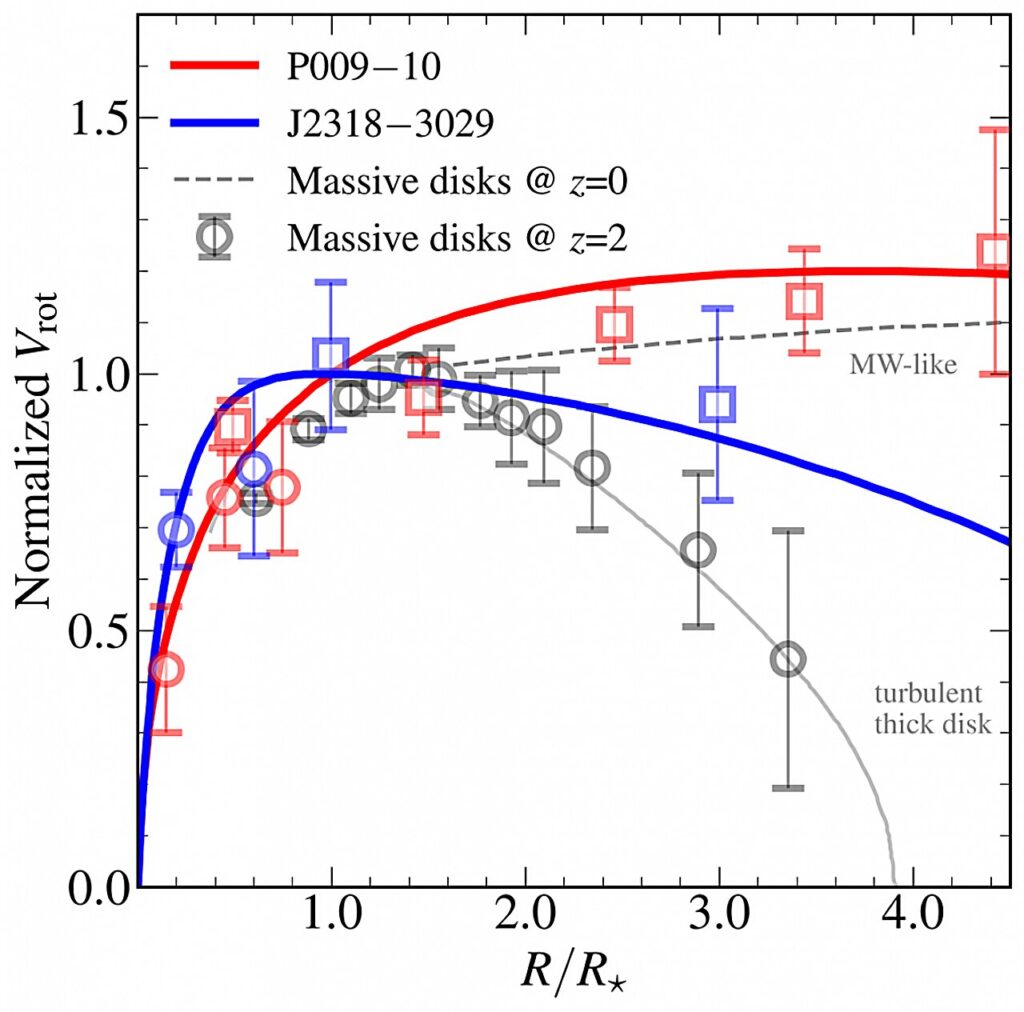
By analyzing the data from ALMA, the team was able to observe the rotation curves of these galaxies, a crucial tool for measuring the distribution of mass within a galaxy. These curves track the velocity of gas particles in a galaxy, and the shape of the curve reveals important information about the galaxy’s mass distribution. If the galaxy were made up only of visible matter—stars, gas, and dust—the rotation curve would decrease at the outer edges, as objects farther from the center would experience weaker gravitational forces. However, the rotation curves of the galaxies studied by Fei and his team showed a flat curve, indicating that the velocity of gas particles remained constant even at great distances from the galactic center. This flatness strongly suggested the presence of a large amount of dark matter, similar to what Rubin had observed in local galaxies, but this time in galaxies located at a much earlier point in cosmic history.
The research team concluded that dark matter accounted for approximately 60% of the total mass in these early galaxies. This result was surprising, as past studies of galaxies at similar distances had shown a decline in the amount of dark matter in the outer regions of galaxies. The flat rotation curve observed by Fei and his colleagues contradicted these earlier findings, suggesting that dark matter played a much more significant role in the early universe than previously thought. This discovery offers a new perspective on how dark matter may have been distributed in galaxies when they were still forming and evolving.
The implications of this finding are profound, as they provide new insights into the formation of supermassive black holes and their relationship with dark matter. Supermassive black holes, which lie at the centers of most large galaxies, are thought to play a key role in galaxy formation and evolution. The growth and development of these black holes are believed to be linked to the accumulation of matter, including dark matter, in their vicinity. The fact that dark matter was so prevalent in the early universe suggests that it may have had a crucial influence on the formation of these black holes and the galaxies that host them.
Additionally, the study raises important questions about the distribution of dark matter in the universe. While the flat rotation curves observed by Fei’s team indicate that dark matter played a dominant role in the formation of galaxies, future studies will need to determine how this distribution evolved over time. The researchers suggest that understanding the relationship between dark matter and supermassive black holes could be key to uncovering the broader processes that have shaped the evolution of galaxies throughout cosmic history.
John Silverman, one of the lead researchers on the study, remarked on the significance of their findings by drawing a parallel between their work and Vera Rubin’s groundbreaking research: “Vera Rubin provided the first evidence for dark matter using the rotation curves of nearby local galaxies. We’re using the same technique but now in the early universe.” This connection highlights how the study of dark matter has evolved from observations of local galaxies to investigations of distant galaxies, offering a broader and more complete picture of the universe’s evolution.
The findings also have broader implications for our understanding of dark matter as a whole. Despite being one of the most dominant components of the universe, dark matter remains elusive, with scientists still uncertain of its exact properties and behavior. The discovery that dark matter played such a prominent role in the formation of galaxies and black holes during the early universe could lead to new theories about the nature of dark matter and its interactions with ordinary matter.
In conclusion, the study conducted by Fei, Silverman, and their colleagues is a significant step forward in our understanding of the early universe and the crucial role dark matter plays in the formation and evolution of galaxies and supermassive black holes. By uncovering new evidence of dark matter’s influence in galaxies located billions of light years away, this research provides a unique and invaluable insight into the workings of the universe during a time when it was still very young. As future research continues to probe the mysteries of dark matter, the findings of this study will undoubtedly serve as an important reference point for astronomers and physicists working to unravel the secrets of the cosmos.
More information: Qinyue Fei et al, Assessing the Dark Matter Content of Two Quasar Host Galaxies at z ∼ 6 through Gas Kinematics, The Astrophysical Journal (2025). DOI: 10.3847/1538-4357/ada145
